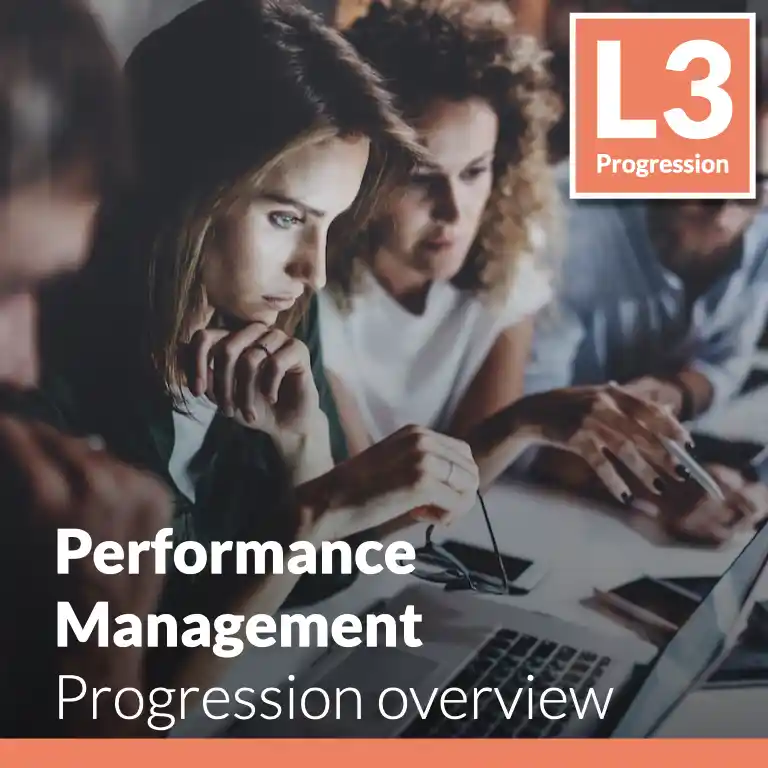Enjoy instant access to a scalable system of proven practices and execution-ready tools. Built to launch strategic HR programs 5X faster!
✓ Enjoy platform access
✓ Create your HR roadmap
✓ View open content in library
✓ Access dozens of practices:
⤷ The HR Strategy program
⤷ Explainers and deep dives
⤷ Supplemental guides
⤷ Insight articles
⤷ Weekly best practices
⤷ And more!
100% Free. No credit card required.
This guide is part of a progression set comprised of Core, Advanced, and Emerging Performance Management practices.
Emerging performance management refines how performance is measured, most notably “for who,” “by whom,” and “for what.” The process can be tailored to employee segments, with different types and classes of employees being measured and receiving feedback on topics and timeframes unique to their work circumstances. Flexibility is established such that different groups can have processes, schedules, and discussion content tailored to their unique needs and preferences. It can involve feedback on individual contributions and those performed in the context of a team effort, driving more collaborative contributions. It also engages more than just functional managers, focusing on more objective and comprehensive performance observations. It expands into a collection of performance observers, including other managers, peers, and even subordinates.
At this level, performance is “calibrated,” or measured, against that of others in more sophisticated ways. The relative difficulty or uniqueness of challenges faced become considerations, and managers actively discuss and compare the contributions of similarly leveled employees directly against each other. The criteria also expand beyond the sole use of performance to measure goals and role expectations. It also uses the demonstration of competencies, corporate values, potential, and contributions to critical corporate efforts. Through this., a more complete picture of employees’ contributions can be assessed, with longer-term value and contributions considered regularly. Rewards and recognition are also expanded beyond pay increases or bonuses for only managers. Salary increases, bonuses, stock, and non-cash rewards and recognition come into play for a broader set of employees, with each type having its unique and deliberate purpose.
Emerging performance management supports building a high-performance culture, with rewards targeted to all types of employee preferences linked to a more strategic and well-rounded set of performance criteria. Those criteria are based on broader and longer-term considerations than just the current performance period’s goals and objectives, and they address the entirety of an employee’s contributions and value to the company’s larger objectives. Leveraging the entirety of contributions can increase the engagement and retention of top performers, who find that the organization deliberately recognizes and rewards more of their effort related to personal and team goals.
Performance management processes move away from a “one-size-fits-all” approach. They enable the tailoring of process elements, schedules, criteria, and content for discreet segments of the workforce, often based on the nature of their work and the significance of their contributions to strategic objectives and outcomes. This enables a heightened employee experience for key employee groups, designed to drive increased employee engagement, motivation, and retention. It also supports greater objectivity, fairness, and equity using multiple data points and perspectives collected on a larger group of employees. Managerial decisions are no longer hidden behind closed doors with formalized processes for identifying employee performance and contributions relative to their peers and job/level expectations. Employee performance standards and expectations are openly discussed and agreed upon, with comparisons and examples shared as the employee’s performance is assessed relative to position requirements and company goals.
Adopting these practices yields a significantly more robust and personalized assessment of employee contributions across the spectrum of roles and functions. It allows the organization to tailor both the process and criteria to the needs and preferences of employees in different groups. It supports improved employee experience (EX) by using tailored approaches for critical skill groups to enhance their engagement and satisfaction. It creates an environment where individual performance can be viewed through the lens of individual accomplishment and as contributions to the team’s success. Through this and the use of multi-rater evaluations, both managerial and collaborative contributions can be recognized and rewarded, and enhanced teamwork can be reinforced. Assessments become more revealing and meaningful with the use of calibration processes that enable comparison of relative levels of goal difficulty and achievements between employees in similar roles or levels, along with more comprehensive assessments that yield an evaluation of the “total value” of each employee to the organization. A more structured and motivating approach to determining the use of various types of compensation allows for more personalization of rewards. It clearly shows employees at many levels of the organization that several types of contributions can matter.
Analyzing and selecting specific talent segments to adjust performance management processes, criteria, and associated rewards based on their unique needs.
Going beyond observations of a single functional manager to include other individuals that can provide useful insights that create a more robust and superior view of the employee’s job performance.
Conducting group comparisons and alignment of employees’ goals and performance evaluations to achieve a more objective and consistent assessment for similar jobs.
Ensuring appropriate linkage of compensation and career development with performance outcomes in specifically targeted ways to successfully use them as motivators for high levels of performance.

Enjoy instant access to a scalable system of proven practices and execution-ready tools. Built to launch strategic HR programs 5X faster!